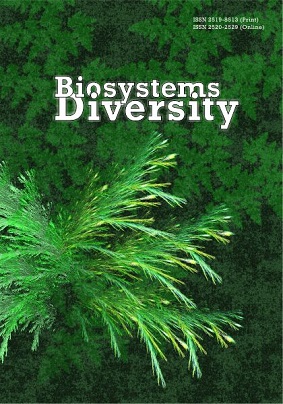Population density and structure of birds breeding in an urban habitat dominated by large baobabs (Adansonia digitata), Northern Namibia
Population density and structure of birds breeding in an urban habitat dominated by large baobabs (Adansonia digitata), Northern Namibia
Author(s): G. KopijSubject(s): Human Ecology, Rural and urban sociology, Environmental interactions
Published by: Дніпропетровський національний університет імені Олеся Гончара
Keywords: associations; community ecology; Corvus albus; Passer domesticus; Streptopelia doves;
Summary/Abstract: Large baobabs are regarded as key plant species in the savannah biome. In this study their role in shaping the avian community has been evaluated. The territory mapping method has been employed to quantify the avian breeding community in the town Outapi (ca. 130 ha), Northern Namibia, well-endowed with large baobabs. A total of 29 breeding bird species were recorded. The alien House Sparrow was by far the most numerous species comprising 48.4% of all breeding birds. The Blue Waxbill and African Palm Swift were also classified as dominant species, comprising together 17.4%. Granivores were by far the most numerous feeding guild, comprising 77.2% of all birds breeding, while the insectivores comprised only 11.8%. Birds nesting in/on buildings comprised 52.7%, those nesting on trees/shrubs – 42.0%. The population densities of many bird species (e.g. doves from the genus Stepropelia, bulbuls, weavers) were comparatively low. Such a situation could have been caused by the exceptionally high population density of the Pied Crow. In the study area, there were 15 breeding pairs and about 100–150 non-breeding individuals. The baobabs may provide them with a feeding resource in the form of the sweet fruits. The crows, as nest predators, feed also on the eggs and nestlings of other birds. Doves seem to be especially prone to such predation, as their nests are easily to detect and destroy. As a result, they have to breed in low density. This in turn, may release other dominant granivores in the study area, namely sparrows. They are not vulnerable to crow nest predation, as their nests are usually well-concealed under eaves and in holes of buildings.
Journal: Biosystems Diversity
- Issue Year: 27/2019
- Issue No: 4
- Page Range: 354-360
- Page Count: 7
- Language: English

